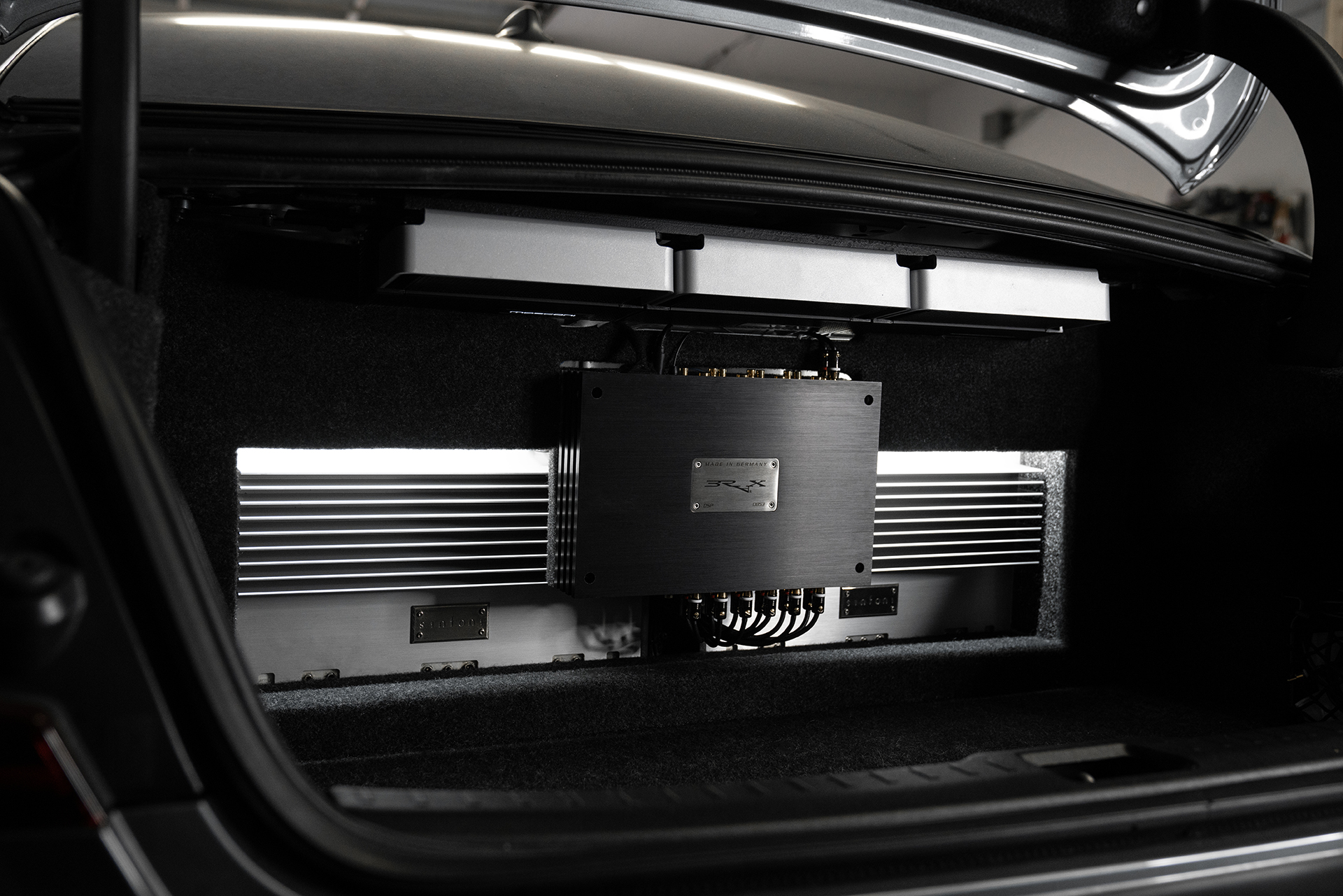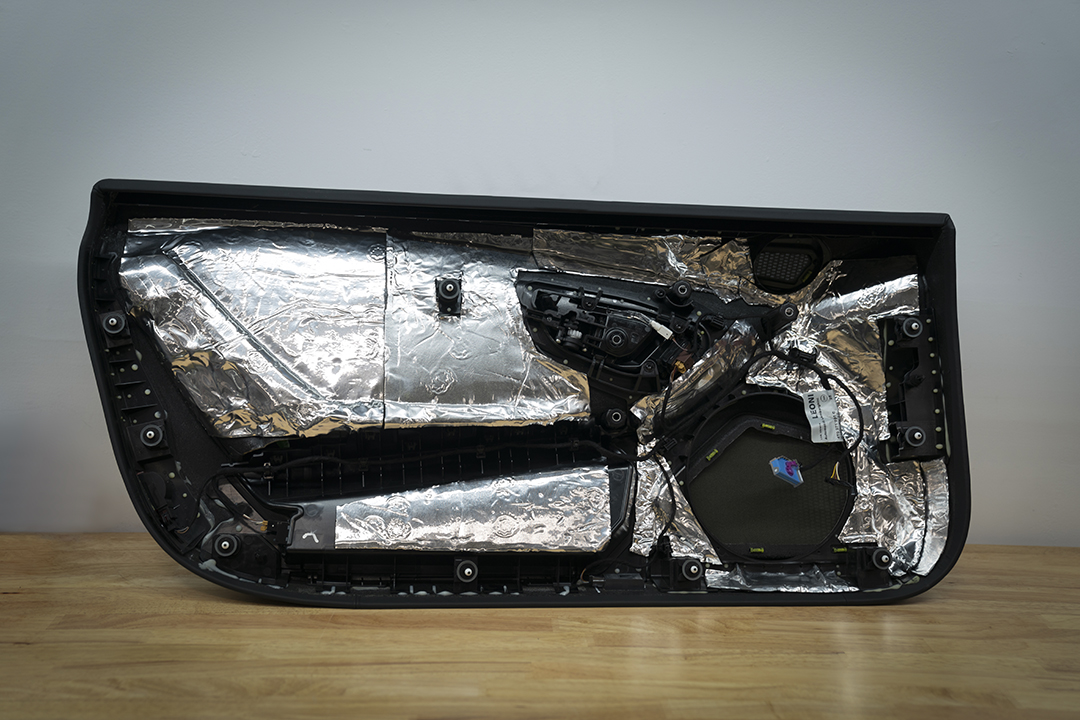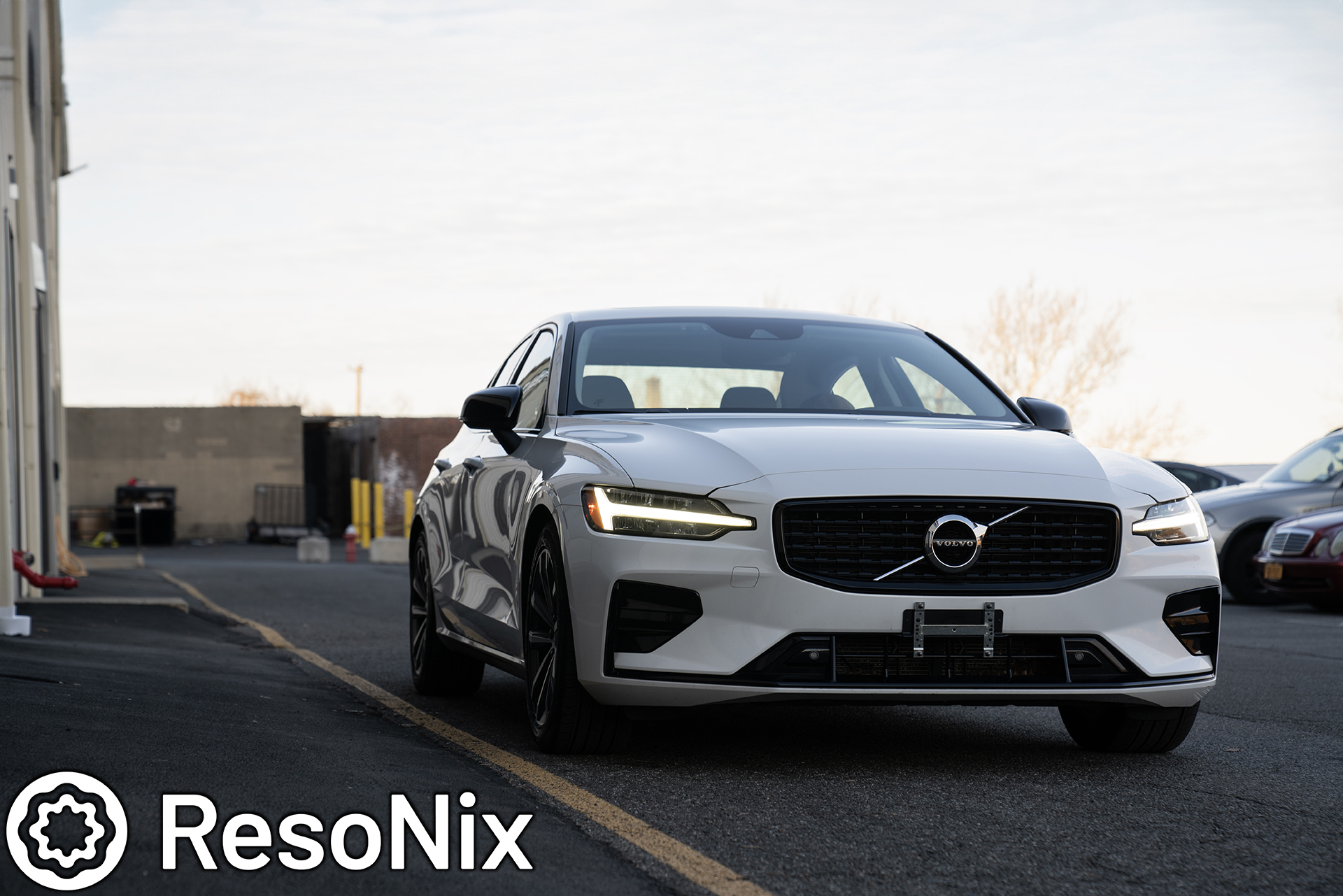
2019 Volvo S60 R-Design – ResoNix Sound Solutions Demo Vehicle Car Audio Installation
2019 Volvo S60 R-Design – ResoNix Sound Solutions Demo Sound System Elevating Sound and Functionality: The Ultimate 2019 Volvo S60

Are you tired of road noise disrupting your peaceful drives, or your sound system being diminished by a bunch of rattles and resonance? Sound deadening your car is an effective way to enhance your driving and music experience by reducing unwanted noise. This comprehensive guide will explore four categories of sound treatment products – each playing a crucial role in achieving a quieter ride. We’ll cover everything from Constrained Layer Damper Sound Deadeners to Noise Barriers, along with basic installation guidelines for each.
For the FULL comprehensive sound deadening guide, please check out our Reference Information & Guide page.
So, there are many different types of sound deadeners, sound absorbers, noise barriers, and decouplers out there. Each and every one of these product types serves a specific task in reducing sound inside of a vehicle.
Constrained Layer Damper (CLD) Sound Deadeners are essential in minimizing vibrations and rattles in your vehicle. Products like the original ResoNix CLD Squares, heavy-duty ResoNix Mega CLD Squares, or the lightweight ResoNix Lite CLD Rectangles are designed to dampen the vibrations of your car’s metal and plastic panels, significantly reducing the noise inside the cabin. They are particularly effective in dealing with low-frequency resonance noises, which are common in automotive environments.
Sound Absorbers, such as ResoNix Fiber Mat Black 0.5″ and 1.0″ , ResoNix Guardian, and ResoNix Lockout play a pivotal role in absorbing airborne sounds. These materials are typically made from fibrous or foam materials and are perfect for covering large surfaces like door panels and car ceilings. They work by absorbing sound waves, preventing them from reflecting back into or entering the cabin.
Decouplers, like the ResoNix Fiber Mat 0.5″ and 1.0″, ResoNix CCF Decoupler 7S, ResoNIx CCF Decoupler 3S, and ResoNix CCF Decoupler 3F are designed to break the path of sound transmission. They create a physical separation between two surfaces, preventing noise from passing through. This is especially useful for areas where panels or parts of the car are in direct contact, leading to noise transmission.
Noise Barriers, such as the ResoNix Barrier, are the final layer of defense against noise. These heavy, dense materials block external noises from entering the car. They are particularly effective against road and wind noise, making them an essential component for a sound deadening or sound proofing project.
Check out this detailed video playlist on how to sound deaden a car like us!
To install CLD Sound Deadeners like ResoNix CLD Squares:
. Clean the surface where you’ll apply the deadener.
. Measure and cut the deadener to fit the panel.
. Peel off the backing and apply it to the car panel. Use a roller and apply light pressure, ensuring no air bubbles.
For installing Sound Absorbers such as ResoNix Fiber Mat:
. Clean and dry the area of application.
. Cut the absorber to size, taking the contours of the area into consideration.
. Secure it in place using the ResoNix Fiber Mat’s built-in peel-and-stick adhesive.
For installing Sound Absorbers such as ResoNix Fiber Mat or ResoNix CCF Decoupler:
. Clean and dry the area of application
. Cut the decoupled to the required size.
. Place it between the two contact points to reduce buzzes, rattles, and noise transmission.
To effectively install Noise Barriers like ResoNix Barrier:
. Locate areas with high external noise intrusion.
. Measure and cut the ResoNix Barrier material.
. Apply it appropriately, preferably with 100% coverage to create a solid barrier against external noise.
Conclusion: Sound deadening your car can significantly improve your driving experience. By understanding and utilizing these four types of products, you can create a quieter, more comfortable cabin environment. Whether you choose to DIY or seek professional help, sound deadening is a worthy investment for any car enthusiast or daily commuter.
Remember to explore these products further and consider their installation for a noticeably quieter ride. Your ears will thank you!
Remember, check out our Reference Information & Guide page for an extremely detailed breakdown on how to sound deaden your car. If you have any questions, feel free to contact us anytime!

2019 Volvo S60 R-Design – ResoNix Sound Solutions Demo Sound System Elevating Sound and Functionality: The Ultimate 2019 Volvo S60

Elevating the Volvo S60 Experience: A nearly completely hidden sound system upgrade with one extra goal; to keep it OEM

ResoNix Sound Solutions is a company with a specialty in high-end car audio and automotive sound treatment that offers top quality products and services that provide superior performance in their respective categories. No gimmicks, no baseless claims, no nonsense. Constrained layer dampers, sound absorbers, decouplers, noise barriers, and car audio DSP tuning and consultation services are part of our line-up with a focus on data-backed, solutions-based products developed by professional enthusiasts, for enthusiasts.
